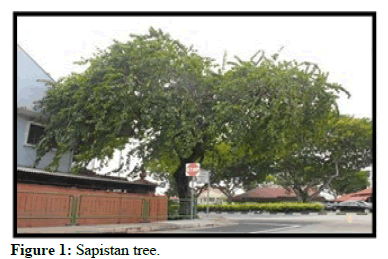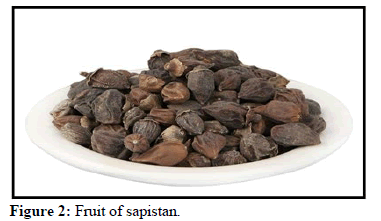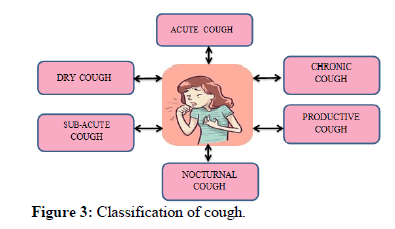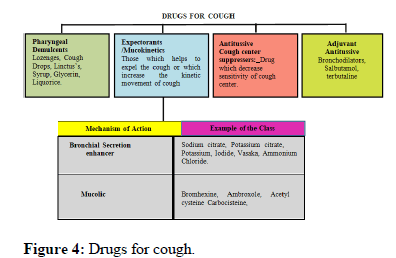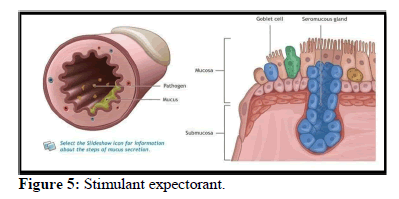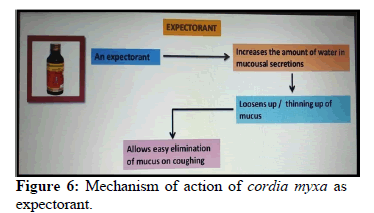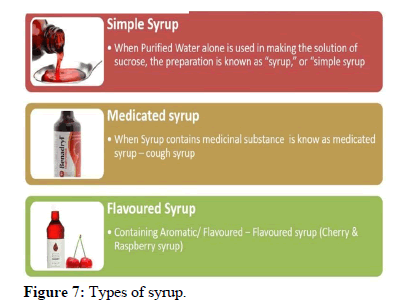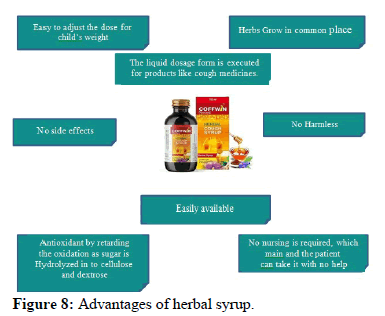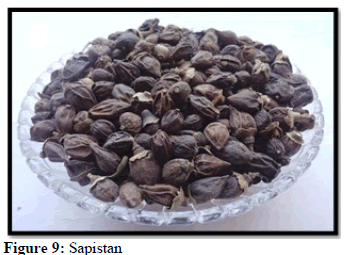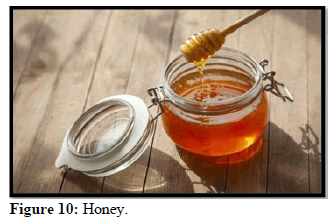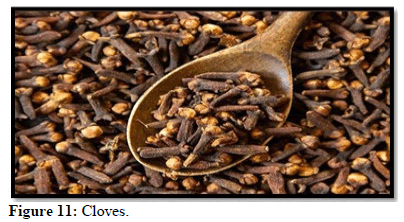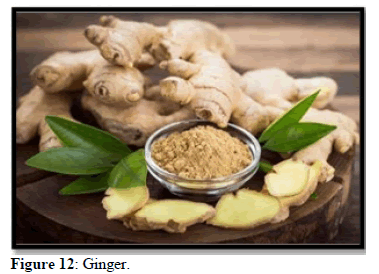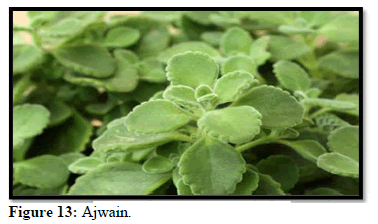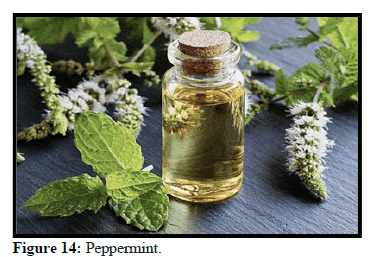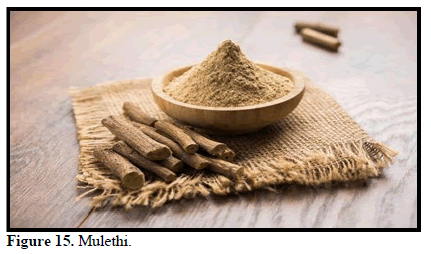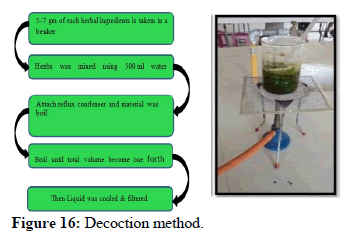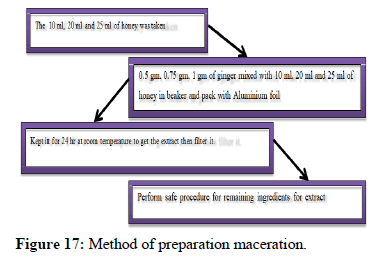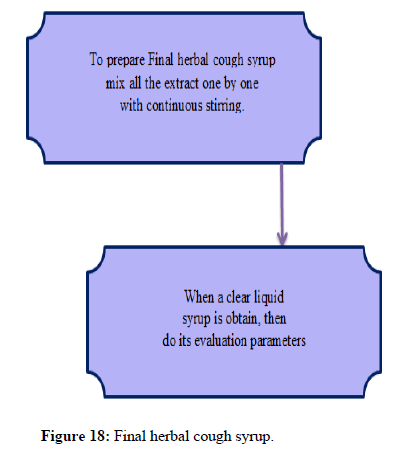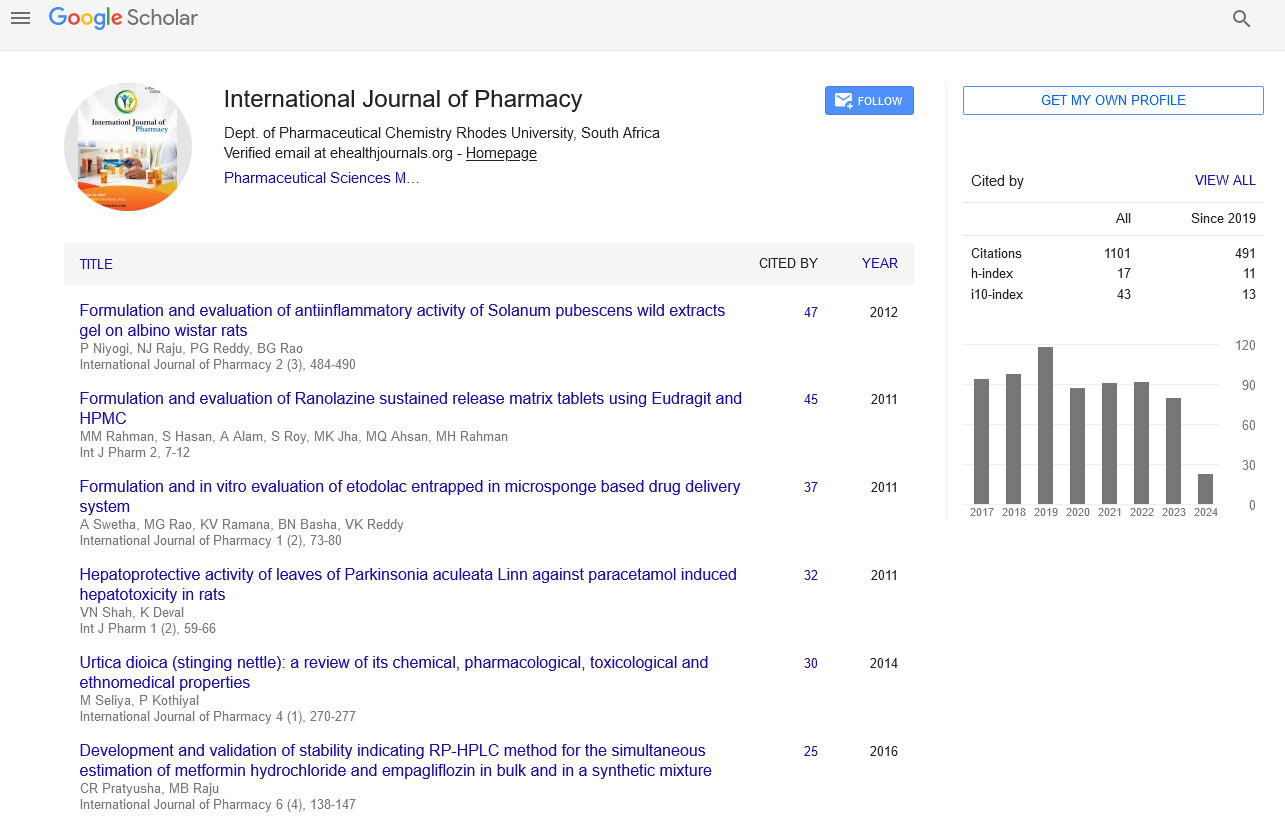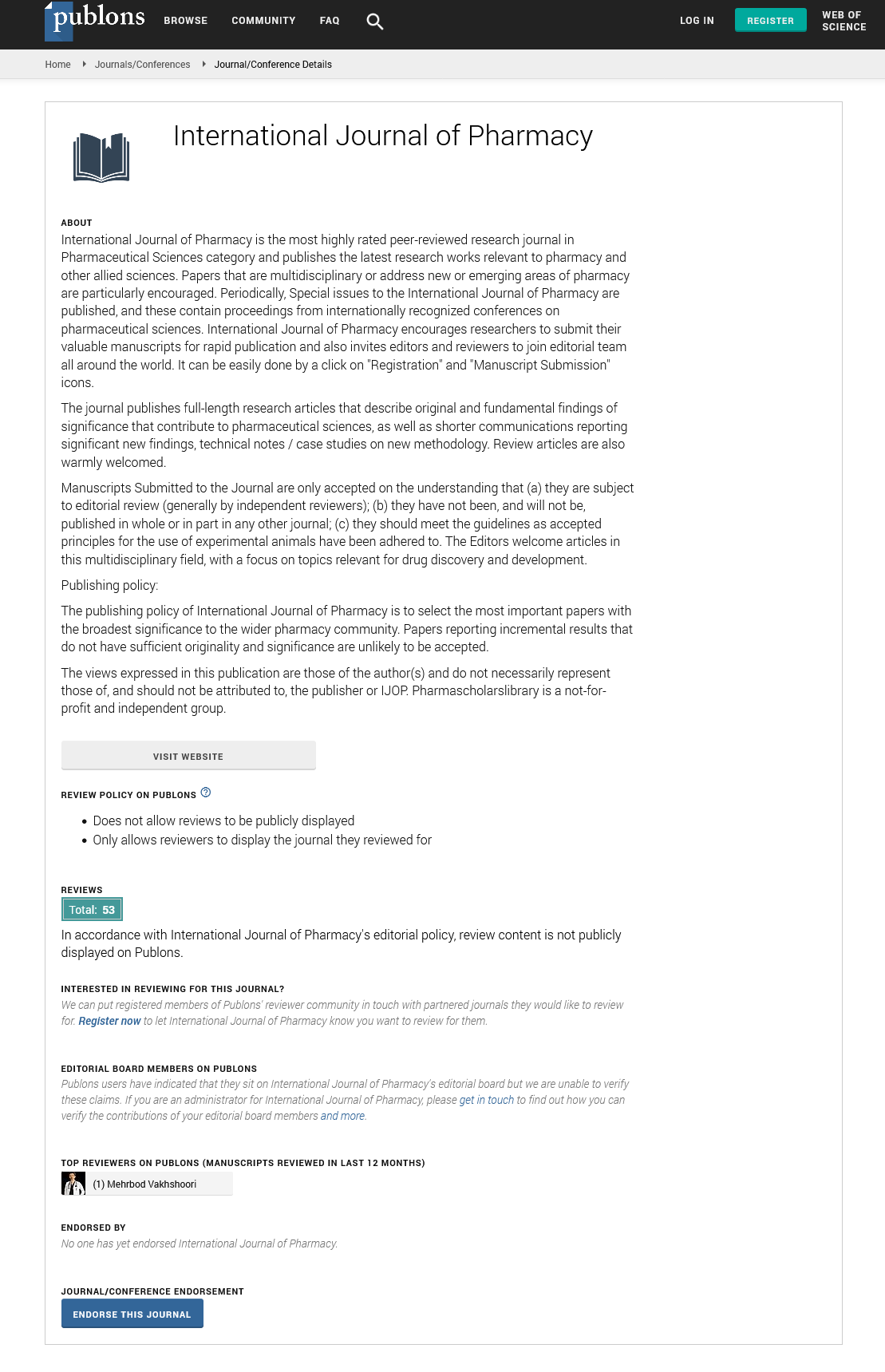HTML
Research Article - (2024) Volume 14, Issue 1
Study and Formulation of Sapistan as Expectorant Syrup
Momin Mohammad Qais Mohammad Aslam*, Faizan Ahmed Md Israeel, Awais Ahmed Abubakar and Momin Rizwan Gufran*Correspondence: Momin Mohammad Qais Mohammad Aslam, Department of Pharmacy, Royal College of Pharmaceutical Education and Research, Pune University, Maharashtra, India, Email:
Received: 01-May-2023, Manuscript No. IJP-23-97489; Editor assigned: 08-May-2023, Pre QC No. IJP-23-97489 (PQ); Reviewed: 23-May-2023, QC No. IJP-23-97489; Revised: 27-Dec-2023, Manuscript No. IJP-23-97489 (R); Published: 03-Jan-2024, DOI: 10.37532/2249-1848-2025.15(1).125
Abstract
Syrups is commonly used and popular dosage form which is used to cure cough and cold, because it having ease of patients compliance. The fruit of Cordia myxa has long been valued throughout its distribution area for its sticky mucilaginous pulp, which is eaten to suppress cough and chest complaints. In present research some natural herbs are used to develop safe and cost effective syrup for wet cough. The aqueous extracts of selected herbs were formulated in particular ratio to syrup form using peppermint as a flavor and Sapistan as an expectorant.
Keywords
Cough, Herbal ingredients, Expectorant, Syrup for wet cough, Cordia myxa
Introduction
Medicinal plants are the nature’s gift to human beings to help them pursue a disease free healthy life [1]. Plants have been used as drugs by humans since thousands of years ago Cordia myxa, the Assyrian plum, is a mid-sized, deciduous tree in the borage family (Boraginaceous), native to Asia. It produces small, edible fruit and is found in warmer areas across Africa and Asia [2]. Cordia dichotoma is a plant species in the genus Cordia. It is called gunda or tenti in Hindi and lasura in Nepali [3]. It yields edible fruits from which a very sticky white substance could be extracted for gluing purposes.
The leaves, fruit, bark and seed have been reported to exhibit ant diabetic, antiulcer, anti-inflammatory immune-modulator and analgesic activities The leaves, seed, fruit, bark and roots are well known to have different medicinal uses: Anti diabetic, anthelmintic, antilarvicidal, hepatoprotective, immunomodulator, ant dysentery, ant dyspepsia, anti-inflammatory, antiulcer, diuretic and laxative Lasora or Sabestan plum bears edible mucilaginous fruits (drupes) with a sweet taste.
Fruits exhibits significant anti-ulcer, and cytoprotective effects. As they are expectorant, demulcent, and hence are useful in dry cough, catarrh, coryza, chronic bronchitis, influenza and in burning micturition [4-7]. The plant is used in Ayurveda as a treatment for rheumatism and Parkinson’s disease many ailments can be treated using different plant parts of SC in Ayurveda (Figure 1).
The plant is analgesic, anti-inflammatory and tonic. It affects the central nervous system and provides relief from anxiety. Its extract is consumed to reduce body weight, tones the blood pressure and improves the cardiac irregularity. It is also useful in fever, fits, ophthalmic problems, rheumatism, colic and nervous disorders. It has also been reported to improve sexual strength. The plant is analgesic, anti-inflammatory and tonic. It affects the central nervous system and provides relief from anxiety. Its extract is consumed to reduce body weight, tones the blood pressure and improves the cardiac irregularity [11].
It is also useful in fever, fits, ophthalmic problems, rheumatism, colic and nervous disorders. It has also been reported to improve sexual strength (Figure 2).
Distribution
The genus Sida L. (Malvaceae) comprises about 250 species distributed primarily in the tropics. The species S. cordifolia is probably indigenous to Africa, tropical and temperate Asia and S. America. It is naturalized elsewhere and is now almost pantropical. Report of this species as an endangered plant is seemingly not based on any standard threat assessment or red listing procedures. The range of its distribution could include the zone extending from the eastern parts of the t times in tropical Africa, tropical As Mediterranean to Eastern Indian parts and was presented in ancienia and Australia (Tables 1-3).
| Hindi | Lasoda, dela, tenti, gunda. |
| English | Sebestan, pink pearl tree, Indian cherry, anonang |
| Arabic | Dilk |
| Bengali | Bahanari |
| Punjabi | Lasuda |
| Nepali | Lasura |
| Telgu | Nakkera |
| Tamil | Vidi |
| Tulu | Challangayi |
| Marathi | Bhonkar , bhokar |
| Gujarathi | Vadagunda |
| Middle east | Bamar tree |
| Sanskrit | Shelu , bahuvarka |
Table 1: Different names.
| Subkingdom | Tracheobionta |
| Super division | Spermatophyta |
| Division | Magnoliophyta |
| Class | Magnoliopsida |
| Subclass | Asteridae |
| Order | Lamiales |
| Genus | Cordia l |
| Species | Cordia myxa l |
Table 2: Taxonomical classification.
| Leaves | The leaves are simple, alternate, 6 cm-10.5 cm long, 4-7.5 cm broad, broadly oval or elliptic ovate, rounded at the base, obtuse or sub-acute at apex, entire or more or less coarsely sinuate serrate in the upper half, glabrous on both sides, thin. Petioles are 1.7 cm—4.3 cm long and slender. |  Leaves of sapistan |
| Fruits | Fruit is a globular ovoid drupe. It is smooth, and of the size of a cherry. It is yellow on ripening and the pulp is almost transparent, tough and viscid. Nut is cordate and seed is solitary. The dried fruit is conical with acute apex, up to 2 cm in length. |  Fruit of sapistan |
| Bark | Bark of the tree is grey or brown rough, with shallow longitudinal wrinkles and furrows and about half inch thick. Branch lets are glabrous and the young shoots are silvery grey. The bark is available in the form of pieces, 5 cm to 10 cm long and 6 mm to 12 mm thick with dark greyish brown colour. |  Bark of sapistan |
| Flower | Flowers are regular, bisexual, white, divaricate, branched corymbs, pedicels short. Sepals are 5, fused into a tubular campanulate, glabrous calyx, pubescent within. Petals are 5, fused into a funnel shaped corolla. Corolla tube 4 mm long, segments 3.5 mm long, 2 mm broad, oblong, recurved. Stamens are 5, hairy, inserted in the throat of thecorolla. Ovary is superior, globular, glabrous. |  Flower of sapistan |
Table 3: Different parts of Cordia dichotoma and its uses.
Cough
A rapid expulsion of air from the lungs, typically in order to clear the lung airways of fluids, mucus, or other material. Also known as Tussis. A cough is your body's way of responding when something irritates your throat or airways. An irritant stimulates nerves that send a message to your brain. The brain then tells muscles in your chest and abdomen to push air out of your lungs to force out the irritant. An occasional cough is normal and healthy. A cough that persists for several weeks or one that brings up discolored or bloody mucus may indicate a condition that needs medical attention. At times, coughing can be very forceful. Prolonged, vigorous coughing can irritate the lungs and cause even more coughing. It is also exhausting and can cause sleeplessness, dizziness or fainting, headaches, urinary incontinence, vomiting and even broken ribs. Cough is the most common symptom in patients subjected to endogenous or exogenous irritants and it is an important symptom of various airway inflammatory diseases. It is also a major public health issue worldwide because it reduces comfort and causes sleep disturbances [8-10]. Over recent decades, herbal medicines and active ingredients of natural products have garnered growing attention as potential therapeutic agents to prevent and treat coughing, due to their high efficacy and low risk of side effects (Figures 3 and 4).
Expectorants
Expectorants are medications or natural ingredients that help clear mucus from the airways. An expectorant is a medication that people can use when they have a cough that produces mucus. Doctors and pharmacists refer to these types of cough as “productive” or “wet.
Expectorants reduce the thickness of mucus and make secretions in the airways thinner. By loosening up the mucus in these ways, expectorants make it easier for a person to cough up phlegm and clear out their throat. Expectorants are the mixtures have a definite but limited place in medicine. They are not curative, but undoubtedly alleviate the symptoms of patients in certain stages of bronchitis or tracheas. They help to raise secretions from the respiratory passages.
Even though they are used by 10% of American children weekly, they are not recommended in children 6 years of age or younger due to lack of evidence showing effect, and concerns of harm Statistical data analysis convinced the FDA that guaifenesin loosens and thins sputum and bronchial secretions and makes expectoration easier by increasing sputum volume and reducing sputum viscosity In the 1990s only a few of the early natural expectorants are in widespread use and some of these have been chemically modified to improve efficacy or physical characteristics.
Expectorant are the class of drug that help in removing sputum from the respiratory tract either by, increasing fluidity of sputum or increasing the volume of fluids that have to be expelled from respiratory tract by coughing. They do not actually stop coughing. This is important because a productive cough should not be suppressed because it is the body way of removing excess mucus, foreign particles, or microorganism from the airways. Expectorants Also helps to relieve chest congestion that occurs because of a cold, the flu, or allergies (Figure 5).
Expectorant classified in two types
•Sedative expectorant
•Stimulant expectorant
Sedative expectorant: These are stomach irritant expectorants which are able to provide their effect through stimulation of gastric reflexes.
For example: Bitter drugs-Ipecac, senega, Indian squill
Compounds: Ammonium chloride, sodium citrate, Potassium iodide.
Stimulant expectorant: These are the expectorants which bring about a stimulation of the secretory cells of the respiratory tract directly or indirectly.
Since these drugs stimulate secretion, more fluids in respiratory tract and sputum is diluted For example: Eucalyptus, lemon etc.
Mechanism action of Cordia myxa as expectorant
•Sapistan (Cordia Myxa) consist of number ofchemical constituents in it.
•In which flavonoids is present, which showsgood expectorant property then others.
•It works by increasing the amount of water inmucosal secretion and lossen up/thinning up themucus.
•To allow easily elimination of mucus oncoughing (Figure 6 and Table 4).
| Parts used | Phytoconstituents | Pharmacological activity | Percentage |
|---|---|---|---|
| Fruit and seeds | Flavonoids | Expectorant | 22.40% |
| Leaves | Apigenin | Antifertility activity and antitussive | 25.65% |
| Bark | β-sitosterol | Growth inhibitory effects on human breast | 39.34% |
| Leaves | Quercetin | Antioxdant activity and anti-inflammatory | 13.20% |
| Fruits | Mucilage | Antitussive | 8%-12% |
| Seeds | Betulin | Anti-inflammatory activity | 70% |
Table 4: List of identified phytoconstituents with pharmacological activity and percentage in Cordia dichotoma.
Syrup
Coughing is one of the common symptoms related to several respiratory diseases such as asthma, bronchitis, pneumonia, etc., though a number of synthetic drugs are available in the treatment of cough, the problem is that an effective therapy against coughing will inevitably bring side effects. Northeastern India is blessed with a lot of floral diversity; abound with natural medicinal potentials. Herbal medicine (also herbalism) is the study of pharmacognosy and the use of medicinal plants, which are a basis of traditional medicine. There is limited scientific evidence for the safety and efficacy of plants used in 21stcentury herbalism, which generally does not provide standards for purity or dosage. The scope of herbal medicine commonly includes fungal and bee products, as well as minerals, shells and certain animal parts. Herbal medicine is also called phyto medicine or phyto therapy.
Herbal syrup: Herbal syrup it is a defined as a prepared and combination and concentration decoction with honey sugar or either some time use alcohol. The base of such syrup is a strong herbal decoction and mixing a decoction with sugar honey help to thicken preserves the decoction.
Herbal plant and formulation are used for many types of disease like cough syrup and other disease. The cough syrup many types of herbal plant are used for pudina, tulsi, cinnamon, honey in that whole plant are used for making herbal medicine the many years.
Herbal formulation a most commonly used a development as well as developing countries as health care. The cough syrup medication is a liquid dosage form use of oral liquid pharmaceutical has been confirm on basic ease of administration to those people who have the problem in the swallowing of solid dosage from medication. This was responsible to increase the shelf life of formulation. The added sweetener can also help to increase the palatability of some herbs. The finally obtained syrup to be delicious it is defined as a thick sticky liquid consisting of a concentrated solution of sugar and water with or without addition of flavorings agent or medicinal substance (Figures 7 and 8).
Materials and Methods
Sapistan
It yields edible fruits from which a very sticky white substance could be extracted for gluing purposes. The leaves, fruit, bark and seed have been reported to exhibit anti diabetic, antiulcer, anti-inflammatory immune modulator and analgesic activities The leaves, seed, fruit, bark and roots are well known to have different medicinal uses: Anti diabetic, anthelmintic, antilarvicidal, hepato protective, immune modulator, anti-dysentery, anti-dyspepsia, anti-inflammatory, anti-ulcer, diuretic and laxative (Figure 9).
Synonyms:
•Cordia myxa
•Assyrian plum
•Lasura, laveda
•Pidar
•Panugeri
•Naruvilli
•Geduri
Biological source:
The assyrian plum, is a mid sized, deciduous tree native to Asia. It produces small, edible fruit and is found in warmer areas across Africa and Asia.
Chemical constituents:
•Alkaloids
•Flavonoids
•Apigenin
•Allatonin
•Mucilage
Uses:
•Antitussive
•Expectorant
•Anti-inflammatory
•Infertility
•diabeties etc.
Honey
Honey is a sweet and viscous substance made by several bees, the best known of which are honey bees. Honey is made and stored to nourish bee colonies. Bees produce honey by gathering and then refining the sugary secretions of plants (primarily floral nectar) or the secretions of other insects, like the honeydew of aphids (Figure 10).
Synonyms
•Madhu
•Madh
•Mel
•Purified honey.
Biological source
Honey is a natural product formed from nectar of flowers by honey bees.
Chemical constituents:
•Glucose (35%)
•Fructose (45%)
•Sucrose (2%)
•Maltose
Uses:
•Natural sweetener
•Anti-inflammatory
•Antioxidant
•Antibacterial agent
Cloves
Cloves are the dried flowers of the clove tree. Native to the Spice Islands near China, cloves spread throughout Europe and Asia during the late middle ages as an important part of local cuisine (Figure 11).
Synonyms:
•Chasm
•Crevasse
•Crevice
•Ditch.
•Gorge.
•Gully.
Biological source
Cloves are the aromatic flower buds of a tree in the family Myrtaceae, Syzygium aromaticum. They are native to the Maluku Islands (or Moluccas) in Indonesia, and are commonly used as a spice, flavoring or fragrance in consumer products, such as toothpaste, soaps, or cosmetics.
Chemical constituents:
•Eugenol (76.8%)
•β-caryophyllene (17.4%)
•α-humulene (2.1%)
•Eugenyl acetate (1.2%)
Uses:
•Spice up curries
•Season meats
•Enrich sauces like Worcestershire sauce.
•Even flavor spiced baked goods.
Ginger
Ginger may help relieve trusted source nausea and vomiting and aid digestion trusted source. Antioxidants and other nutrients in ginger root may help prevent or treat arthritis, inflammation and various types of infection. Ginger may also reduce the risk of diabetes, cancer and other health problems (Figure 12).
Synonyms:
•Amber
•Bronze
•Buff
•Chestnut
Biological source
Ginger, (Zingiber officinale), herbaceous perennial plant of the family Zingiberaceae, probably native to southeastern Asia, or its pungent aromatic rhizome (underground stem) used as a spice, flavouring, food and medicine.
Chemical constituents:
•Gingerol
•Shogoel
•Zingeron
•Paradol
•Curcumin
Uses:
•Colds
•Nausea
Ajwain
Ajvain (Carum copticum), also called bishops weed, is a herb that is used as a spice and a major ingredient in different types of medicines. Ajvain is thought to have originated in Egypt and the eastern mediterranean region. Ajvain is extensively cultivated in black soil, especially along the riverbank in Egypt and several other countries like Iran, Afghanistan and India. The seeds of ajvain are small yet have a hot, penchant and bitter taste (Figure 13).
Synonyms:
•Ajowan caraway
•Omam (in Tamil)
Biological source:
Ajowan is the dried ripe seeds of Trachyspermum ammi (L.) Sprague, belonging to family Apiaceae.
Chemical constituents:
•Thymol
•Thujene
•Terpenin
•Cymene
Uses:
•Infection prevention
•Lower blood pressure.
•Cough and congestion relief.
Peppermint:
Peppermint is used to add flavor or fragrance to foods, cosmetics, soaps, toothpaste, mouthwashes and other products and it may have some medicinal uses. A person can also use dried or fresh peppermint (Mentha piperita) leaves to brew tea. Peppermint is originally from Europe, but now people cultivate it all over the world. This article is part of a collection of articles on the health benefits of popular foods (Figure 14).
Synonyms:
•Red gum
•Eucalyptus
•Eucalypt
•Eucalyptus tree
Biological source:
Peppermint oil (Menthae piperitae aetheroleum), which contains cineol, limonene, menthofuran, menthol and menthone, is obtained from the fresh leaves of peppermint, Mentha piperita by steam distillation.
Chemical constituents:
•Menthol
•Menthone
•Pulegone
•Carvon
Uses:
•Irritable Bowel Syndrome (IBS).
•Other digestive problems.
Mulethi
Licorice, scientifically known as Glycyrrhiza glabra, is one of the most popular medicinal plants belonging to the Fabaceae family. It is a perennial herb grown in temperate zones. The plant parts used are runners and roots, which are collected in the fall season. The medicinal use of licorice in western and eastern cultures dates back thousands of years, it is also one of the most common ingredients in Chinese medicine. The name Glycyrrhiza is derived from the Greek terms ‘glykos’, meaning sweet, and ‘rhiza’, meaning root. It is native to the Mediterranean region and grown in India, China, Spain, Iran, Russia and Italy.
Synonyms
Licorice or Mulethi, also known as “sweet wood”.
Biological source
Liquorice consists of subterranean peeled and unpeeled stolons, roots and subterranean stems of Glycyrrhiza glabra Linn, and other species of Glycytrhiza (Figure 15 and Table 5).
Chemical constituents:
•Liqviritine
•Liqviritin
•Liqviritine
•Apioside
•Glabirdin
Uses:
•Respiratory and digestive disorders.
•Reduces stress and depression.
•Controls cholesterol.
•Boost immunity
| 1 | Sapistan | Anti-inflammatery, expectorant |
| 2 | Honey | Antioxidant, anti-inflammatory, anti-bacterial agent |
| 3 | Clove | Antioxidants |
| 4 | Ginger | Anti-inflammatory, anti-tussive |
| 5 | Ajwain | carminative, antimicrobial |
| 6 | Peppermint | Flavouring and cooling effect |
| 7 | Mulethi | Relieves constipation, prevents gastric and peptic ulcers, expectorant, anti-tussive |
Table 5: Name and role of ingredients.
Method
The liquid oral is prepared by two methods; first is decoction method and maceration method (Figures 16-18 and Tables 6-8).
| Sr. No. | Ingredients | Quantity for 100 ml |
|---|---|---|
| 1 | Sapistan | 40 ml-45 ml |
| 2 | Honey | 16 ml |
| 3 | Clove | 6 ml |
| 4 | Ginger | 8 ml |
| 5 | Ajwain | 10 ml |
| 6 | Peppermint | 9 ml |
| 7 | Mulethi | 9 ml |
Table 6: Formula no 01.
| Sr. No. | Ingredients | Quantity for 100 ml |
|---|---|---|
| 1 | Sapistan | 35 ml-40ml |
| 2 | Honey | 15 ml |
| 3 | Clove | 7 ml |
| 4 | Ginger | 14 ml |
| 5 | Ajwain | 12 ml |
| 6 | Peppermint | 7 ml |
| 7 | Mulethi | 10 ml |
Table 7: Formula no 02.
| Sr. No. | Ingredients | Quantity for 100ml |
|---|---|---|
| 1 | Sapistan | 40 ml-45 ml |
| 2 | Honey | 15 ml |
| 3 | Clove | 6 ml |
| 4 | Ginger | 7 ml |
| 5 | Ajwain | 13 ml |
| 6 | Peppermint | 9 ml |
| 7 | Mulethi | 10 ml |
Table 8: Formula no 03.
Results and Discussion
Evaluation parameters
The results shown in below Tables 9 and 10.
| Sr. no. | Test | Procedure |
|---|---|---|
| 1 | Colour examination | 5 ml of prepared syrup was taken on a watch glass ,then watch glass placed against white background in white tube light then colour was observed with naked eyes |
| 2 | Odour examination | 2 ml of prepared syrup was taken and Smelled by individually, the time interval between 2 smelling was 2 min to nullify effect of previous smelling. |
| 3 | Taste examination | A pinch of final syrup was taken and examined on taste buds of the tongue |
| 4 | pH determination | 2 ml of prepared syrup was taken and dip the PH paper to chek the PH. |
| 5 | Viscosity determination | The viscosity of formulation was determined by using Ostwald viscometer. |
Table 9: Physicochemical parameters of formulated herbal cough syrup.
| Sr.no | Test | Result 1 | Result 2 | Result 3 |
|---|---|---|---|---|
| 1 | Colour examination | - | - | - |
| 2 | Odour examination | - | - | - |
| 3 | Taste examination | - | - | - |
| 4 | pH determination | - | - | - |
| 5 | Viscosity determination | - | - | - |
Table 10: Result of physicochemical parameters of formulated herbal cough syrup
Conclusion
The above formulation and methodology for “sapistan herbal syrup” is due to its expectorant activity. The plant is wildly available and commonly used in Indian medicinal system. The proposed product of syrup with its ingredients will give significant results.
It is concluded that on combining the extracts of sapistan fruit with sapistan, honey, clove, ginger, ajwain, peppermint, mangrela, mulethi in different ratio to get multipurpose effect such anti-inflammatory, anti-diabetic, expectorant, anti-parasitic, antimicrobial and immune modulatory properties.
This study can be helpful for upcoming researchers to select these herbs for the formulation and evaluation for other medicinal purpose which can be claimed for their efficacy with scientific data.
References
- Wikipedia contributors. "Cordia myxa." Wikipedia, The Free Encyclopedia. 2023.
- Lasoda: Cordia dichotoma: Benefits, Remedies, Research, Side effects. Easyayurveda.com. Updated December 21, 2016.
- Lasora (Cordia dichotoma) Medicinal Used And Health Benefits. Bimbima. Updated October 29, 2016.
- Mayoclinic. Symptoms Cough Definition. Mayo Foundation for Medical Education and Research (MFMER). 2023
- Expectorants: Everything you need to know. Medicalnewstoday. Health line Media. July 29, 2022
- Ferguson B. Expectorants. Slide Player. 2023
- Cordia myxa
- Wikipedia contributors. "Herbal medicine." Wikipedia, The Free Encyclopedia. 2023.
- Wikipedia contributors. "Honey." Wikipedia, The Free Encyclopedia. 2023.
- Clove: Health Benefits. WebMD. Updated October 23, 2023
- Ginger: Uses, benefits, and nutrition. Medicalnewstoday. Updated on March 28, 2022
Manuscript Submission
Submit your manuscript at Online Submission System
Google scholar citation report
Citations : 1101
International Journal of Pharmacy received 1101 citations as per google scholar report
International Journal of Pharmacy peer review process verified at publons
Indexed In
- CAS Source Index (CASSI)
- HINARI
- Index Copernicus
- Google Scholar
- The Global Impact Factor (GIF)
- Polish Scholarly Bibliography (PBN)
- Cosmos IF
- Open Academic Journals Index (OAJI)
- Directory of Research Journal Indexing (DRJI)
- EBSCO A-Z
- OCLC- WorldCat
- MIAR
- International committee of medical journals editors (ICMJE)
- Scientific Indexing Services (SIS)
- Scientific Journal Impact Factor (SJIF)
- Euro Pub
- Eurasian Scientific Journal Index
- Root indexing
- International Institute of Organized Research
- InfoBase Index
- International Innovative Journal Impact Factor
- J-Gate
